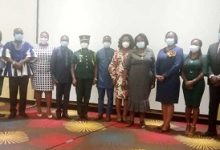
The lack of lifejackets on boats is posing danger to passengers travelling on the Oti River and Volta Lake.
According to the Dambai Boat Owners Association (BOA) in the Krachi-East Municipality of the Oti Region, lifejackets were necessary to save lives in the event of a boat accident.
Speaking in an exclusive interview at Dambai, the Chairman of BOA, Mr Daniel Kofi Tseki, appealed to non-governmental organisations (NGOs) and philanthropists to help provide lifejackets for passengers in the Krachi-East Municipality, to protect lives on the two water bodies which were the only mode of transportation for the people in that part of the country.
He said life jackets were expensive and difficult to come by and the boat owners in the Krachi-East Municipality could not procure them for passengers.
According to him, boats operating in the municipality could carry between 50 and 75 people and it was financially out of reach for boat operators to procure life jackets for passengers.
“The use of boat is the only predominant means of transportation in the Krachi-East area and that emphasises the need for philanthropists, the government and NGOs to help procure lifejackets for passengers to make water transportation attractive and safe to the people at all times,” he said.
Mr Tseki explained that even though the government had removed stubs in the Volta Lake, it did not guarantee total safety travelling on the lake and the rivers, as the only way to protect lives was through the use of lifejackets.
He announced that there were over 240 boats operating in the area without lifejackets, and that put the life of passengers at risk, adding that “As seat belts are important in vehicles, so is lifejackets for boats as it protect lives in case of accidents.”
Mr Tseki said the removal of stubs in the Volta Lake only reduced the risk of accidents but that was not the only means of disaster in water transportation.
He said natural occurrences such as storms remained a major problem to transportation on the lake and the river, and the only way to protect lives was by wearing lifejackets.
Mr Tseki explained that a big boat, for instance, carried 75 passengers and medium boats carried 50 passengers and a boat should have between 75 and 60 lifejackets for the passengers to help protect lives when a storm hits a boat in high waters.
The Officer-in-charge of the Naval Detached Station at Dambai, Petty Officer Class One (PO1), Livingstone Badza, said naval personnel at the station normally educated the boat owners on the need to secure lifejackets for passengers to promote safety.
POI Badza said personnel normally checked the water-marks on the boats to ensure that the boats would not overload, and explained that in case where boats carried loads more than their weights which could lead to accidents, the acceptable number of passengers of 75 and 50 would be reduced to prevent overloading.
He said personnel of the Naval Detached Station also inspected the quality of the boats and engines, and explained that the big boats per standards used two engines.
Mr Badza said where a boat operator operated on one engine because the other had developed fault, he or she was prevented from working until the second engine was fixed, and explaining that using only one engine for a big boat could easily lead to accidents.
FROM SAMUEL AGBEWODE, DAMBAI







